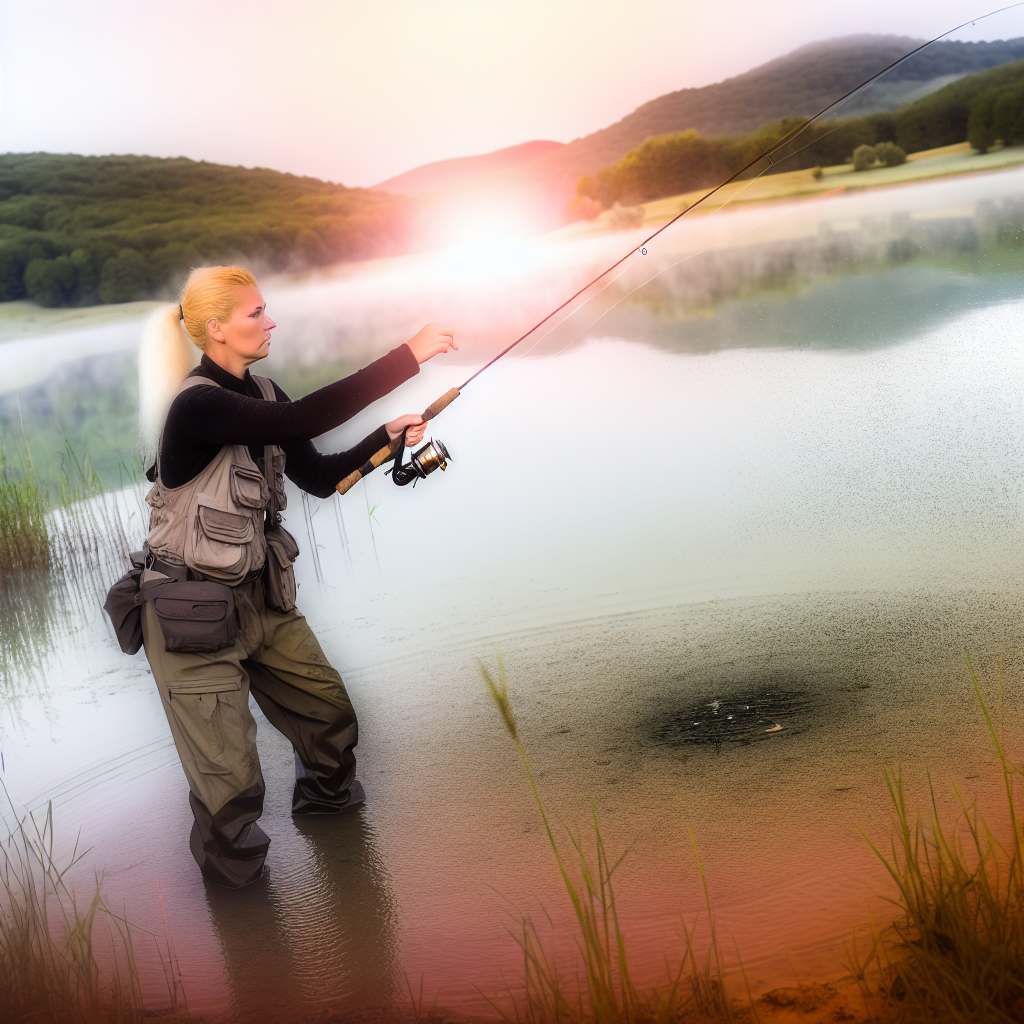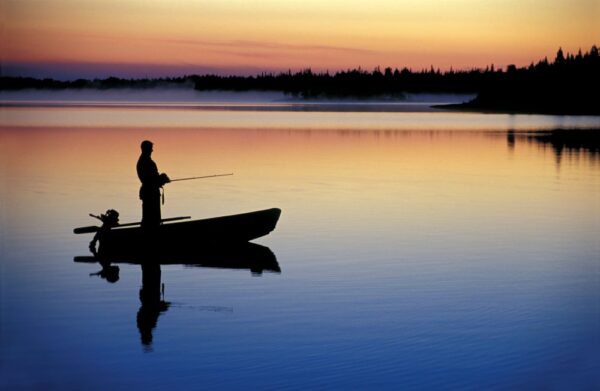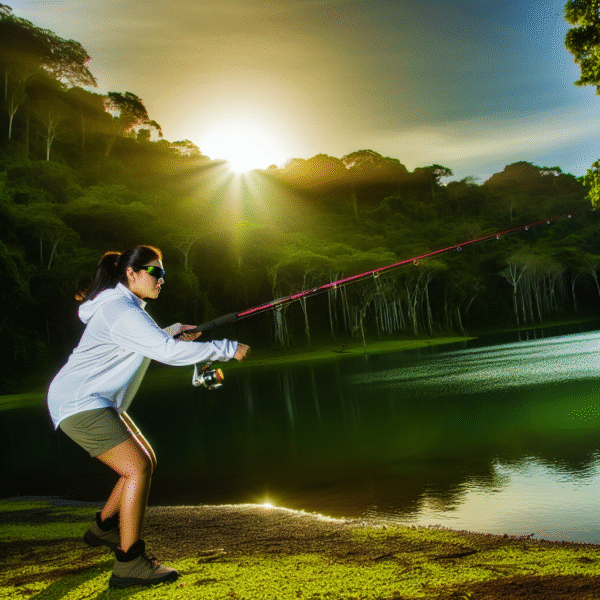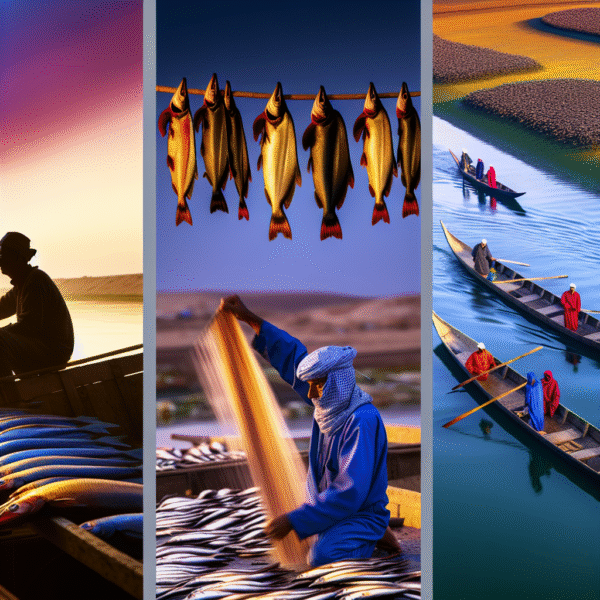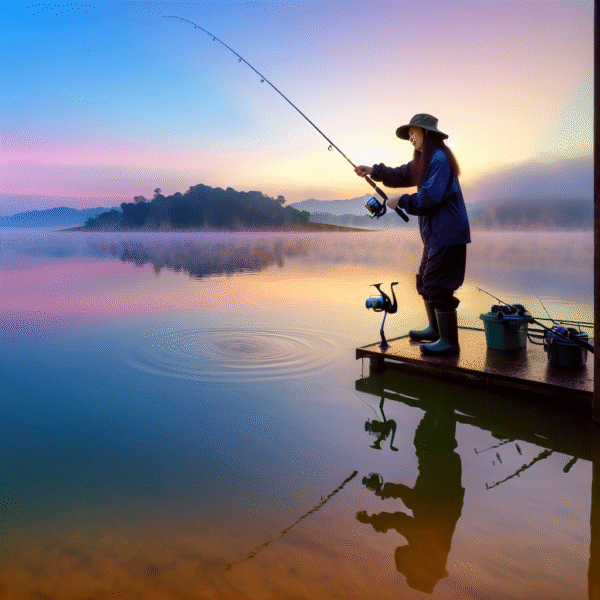Mastering the Basics: Casting Tips and Techniques for Every Angler
Casting tips and techniques form the foundation of any successful fishing experience. Whether you’re an experienced angler or just picking up a rod for the first time, mastering different casting methods and selecting the right gear can dramatically improve your results and enjoyment.
Anglers generally use three primary casting techniques: overhead, sidearm, and roll casting. Overhead casting is best for long, accurate throws—ideal in open spaces like lake shores. Sidearm casting is useful in tighter areas where vertical space is limited. Roll casting, often used in fly fishing, is perfect when backing space is limited, such as in wooded rivers or small streams.
Choosing the right gear reinforces effective technique. For beginners, spin casting gear with closed-face reels—such as the Zebco 33—is simple and reliable. Baitcasting reels offer experienced anglers increased accuracy, while fly rods support the precision needed for presenting delicate flies. Travelers targeting specific environments, like Crater Lake shores or Tahoe tributaries, benefit from renting locally matched gear to avoid travel hassles and mismatched setups.
Adapting Your Casting Style to Terrain and Water Conditions
Adapting casting tips and techniques to your surroundings turns an average day into a fruitful outing. Casting isn’t one-size-fits-all—success on the water hinges on technique adjustments based on terrain and natural factors.
Along rocky coastlines, such as those in Maine’s Acadia National Park, roll and sidearm casts reduce snags and provide control in congested settings. In fast-flowing rivers like the Gallatin in Montana, concise roll casts with finesse reduce water disturbance while targeting narrow feeding lanes. Keep your arm tight and use wrist flicks for accuracy.
On larger bodies of water, like Minnesota’s Mille Lacs Lake, overhead casts help span distances. Casting into the wind from a downwind position increases reach—just ensure steady rhythm and technique. Meanwhile, in arid camping destinations like Oregon’s John Day Fossil Beds, midday fishing means shorter, precise casts into shaded pools using polarized sunglasses to locate fish.
For family trips, calm areas such as Lake Winnipesaukee’s coves offer relaxed settings for practice. These low-pressure spots let beginners refine technique while still experiencing quality fishing opportunities.
Top U.S. Destinations to Hone Casting Tips and Techniques
Some locations go beyond scenery—they offer ideal environments to develop your casting technique in harmony with regional angling culture. Whether freshwater fly or shoreline spin casting, these destinations offer immersive, educational, and family-friendly fishing experiences.
Arkansas River, Colorado: Near Buena Vista, the Big Bend section features ADA-accessible piers and signage educating visitors about freestone trout environments. Fly anglers will find the varied water perfect for perfecting roll and overhead casts. Guided trips through ArkAnglers provide personalized instruction for all levels.
Hilo Bay, Hawai’i: Cast into calm saltwater lagoons from rugged breakwaters and connect with centuries-old shoreline fishing practices. Local Hawaiian “uncles” often share hand-line casting secrets, offering insight into non-reel traditions that still produce results today.
Mount Pleasant Pier, South Carolina: This Charleston-area pier provides a hands-on example of how casting tips and techniques respond to tides. Locals time their spinning casts with brackish currents, a must for optimizing bait presentation in ever-shifting tidal zones.
Lake Arrowhead, California: A short drive from Los Angeles, this alpine lake offers great seasonal casting clinics and rentals from Leroy’s Tackle Shop. Early mornings see high trout activity—use gentle sidearm casts to minimize splash and avoid spooking the fish in shallow areas.
Teaching Kids and Beginners Proper Casting Techniques
Casting tips and techniques should be fun to learn, especially for kids and beginners. With the right approach, new anglers can build confidence while enjoying time outdoors.
Start by choosing the right spot. Still, open water such as Big Bear Lake in California or designated trout ponds like Grant’s Kennebago Camps in Maine create safe, predictable learning environments. Avoid fast rivers or crowded docks that challenge coordination and increase tangle risks.
Use beginner-friendly gear like push-button spin cast reels combined with lightweight rods. Practice short and simple casts using floating targets placed 10–15 feet away. Counting aloud (“one… two… cast!”) builds rhythm and teaches proper release timing.
Make casting fun outside of a fishing context. Use lawn casting games with velcro lures in parks or beaches—Seattle’s Lincoln Park is ideal for these drills. Combine practice sessions with community visits, like riverside museums or local fish markets, to add cultural depth to the experience.
Always celebrate each successful cast, regardless of the result. Reinforcing effort over catch keeps beginners engaged and eager to improve.
Practicing Environmental Care and Casting Etiquette
Understanding casting tips and techniques goes hand in hand with learning responsible fishing. Preserving scenic waters and fishing access depends on ethical behavior and local awareness.
Always use designated areas. Sites like Florida’s Bahia Honda State Park or Chicago’s Montrose Harbor often separate fishing zones from swimming areas. Follow posted rules and consult park rangers to avoid fines or conflicts.
Pack out everything you bring. Even small bits of monofilament line can entangle wildlife or pollute the water. If your line breaks, work to retrieve it. Use biodegradable lures when possible and avoid overcasting near delicate vegetation zones.
Respect space while casting. Maintain at least 10–15 feet between groups to stay safe and courteous. If you’re interested in someone else’s spot or technique, observe first, then ask—locals appreciate curiosity paired with respect.
Many regional efforts encourage travelers to give back. Join clean-up crews at Chesapeake Bay or stewardship sessions in Michigan’s Au Sable River region. Tangible contributions like these keep fishing sites viable for future generations.
Seasonal Strategies: Casting Tips and Techniques Year-Round
Each season reshapes fish behavior—and your casts must adapt accordingly. With the right seasonal approach, your casting performance remains consistent wherever you go.
Spring: Fish feed eagerly in shallow, warming waters. Cast light crankbaits or surface lures toward shorelines during early morning hours. In clear lakes like Lake Quinault or Lake Champlain, an unobtrusive overhand cast helps avoid alerting early-biting fish.
Summer: Heat drives fish deeper. Use accurate, slower casts at dawn and dusk, especially in high-altitude lakes like Colorado’s Lake Dillon. Pay attention to local insect hatches and consult fly shops such as Cutthroat Anglers for real-time pattern advice.
Autumn: Aggressive pre-winter feeding boosts your chances. Strong casts near submerged logs or drop-offs work well, especially in fish-abundant places like Virginia’s Smith Mountain Lake or lakes across Michigan’s Upper Peninsula.
Winter: Ice-free rivers become prime spots. Cast slowly in deep pools, targeting sluggish fish. Dress for windchill and use low-profile, precise movements to reduce ice buildup on gear and minimize strain during casting.
Make Every Cast Count
By learning versatile casting tips and techniques that align with local terrain, seasons, and culture, you turn every cast into a purposeful act. Whether you’re standing knee-deep in a mountain stream or perched on a pier at sunset, the skill of casting connects you with nature, community, and the thrill of the sport.
